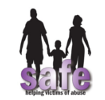Domestic violence in later life occurs when a person uses power and control to inflict physical, sexual, emotional, or financial injury or harm upon an older adult with whom they have an ongoing relationship. The aggressors include spouses and former spouses, partners, adult children, extended family, and in some cases caregivers. The problem occurs in all communities, and affects people of all ethnic, cultural, racial, economic, and religious backgrounds. Although most victims are female, men can be harmed, too.
Generally, abusers use a pattern of coercive tactics, such as isolation, threats, intimidation, manipulation, and violence, to gain and maintain power over their victims. Often they tell their victims where they can go, whom they can see, and how they can spend their money — in other words, control their decisions. Some abusers use their role and power to financially exploit their victims. Others feel that they are entitled to get their way because they are the “head of the household,” or because they are younger and physically stronger than their victim is.
Some experts view late life domestic violence as a sub-set of the larger elder abuse problem. Elder abuse, broadly defined, includes physical, sexual and emotional abuse, financial exploitation, neglect and self-neglect, and abandonment. The distinctive context of domestic abuse in later life is the abusive use of power and control by a spouse/partner or other person known to the victim.
SAFE provides services for victims of domestic violence in later life. Please call our crisis line (910.893.7233) for more information and support.

